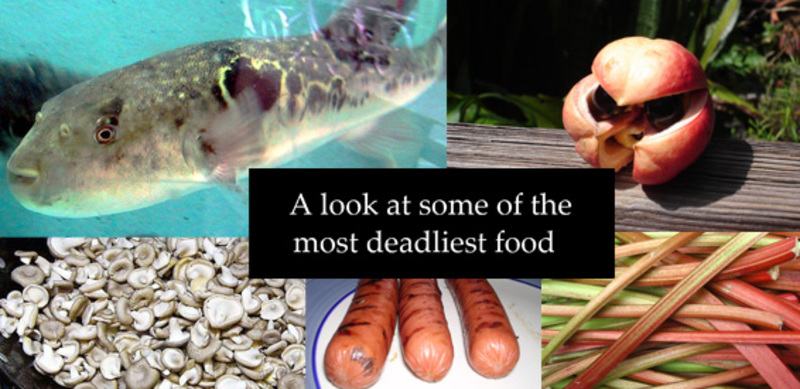fermentation process is sped along. The problem is that sometimes the maggots survive inside the human body and cause severe health problems, such as bloody diarrhoea and vomiting.
5. Rhubarb
The important thing to remember when cooking with rhubarb is to only use the stem, and never consume the green leaves. Rhubarb leaves are full of oxalates, which are poisonous if ingested in significant amounts, which can cause seizures and severe respiratory problems.
6. Monkey Brains
Served mainly in Asia, monkey brains can be extremely dangerous. There is an illness called Variant Creutzfeldt-Jakob disease, which is similar to Mad Cow disease, that can lurk inside a monkey’s skull. This disease will destroy a person’s brain, and cause death.
 7. Sannakji Choking Octopi
7. Sannakji Choking Octopi
In Korea, Sannakji wriggling octopus is considered a great treat for those who love seafood. The danger is these octopi are served while the animal is still moving. They have been known to attach their tentacles and suction cups around the necks of diners and choke them to death.
8. Hot Dogs
Hot Dogs may not seem that deadly but they can cause asphyxiation, especially in young children, which can lead to death. Small bites should always be taken and for little children Hot Dogs should be cut up before serving.
9. Cassava root
Cassava root is used to make tapioca. If the cassava is improperly prepared, it can produce cyanide. Eating this root is one way to get a healthy dose of carbohydrates, however you have to make sure it’s always properly cultivated and cooked, otherwise you might get some unwanted poison as well.
10. Mushrooms 
The danger with mushrooms is when people head out into the forest and pick their own, the results being deadly if they choose the wrong kind. Poisonous mushrooms, often referred to as “toadstools,” carry toxins that can make a human very sick, and even result in death.


















